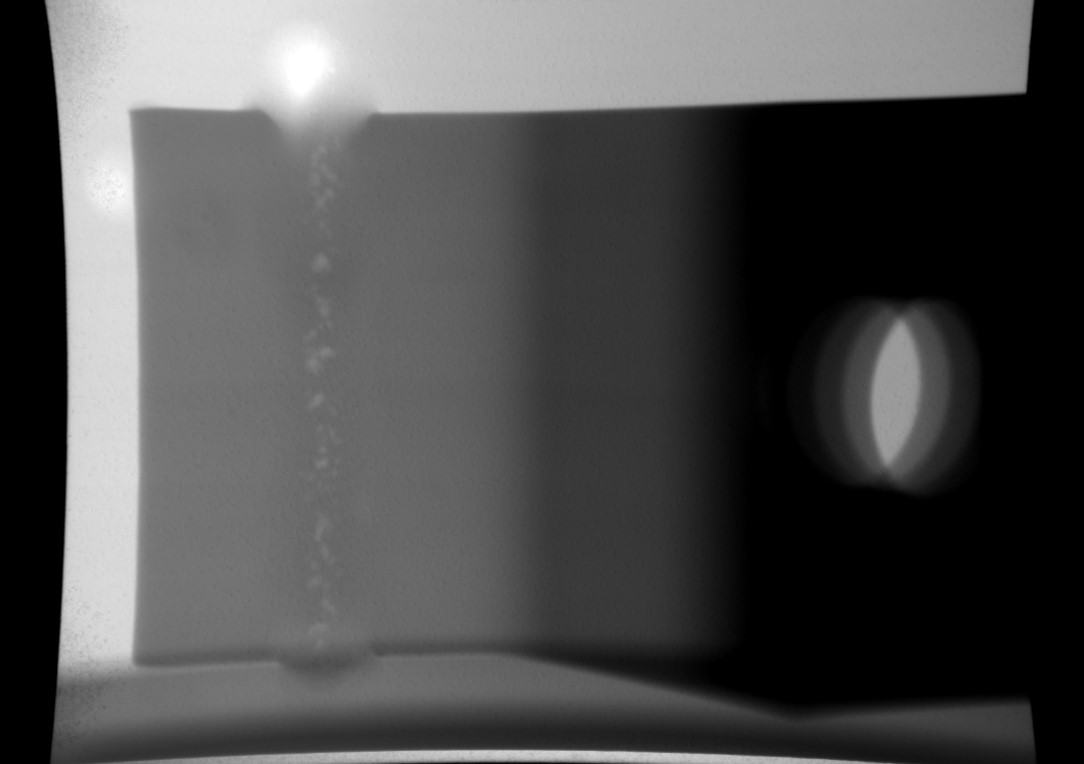Fax: (0 80 36) 9 08 20- 28
E-Mail: info@bbw-lasertechnik.de
Gewerbering 11
83134 Prutting
The quality assurance methods used on these components are just as varied as the areas of application for the products welded by us. These are necessary to ensure the properties of the weld seams for subsequent operation. When customers entrust us with their components for welding, they have precise ideas about what properties the weld seams should have and what requirements must be met. In this blog post, you can find out which quality assurance processes we use at BBW Lasertechnik and how we can distinguish good weld seams from bad ones.
The gold standard: metallographic examinations
Geometric specifications and a defined seam quality must be adhered to for most weld seams. We can determine these during process development by making transverse, longitudinal or plane sections. Figure 1 shows a longitudinal section, for example, which we can use to assess parameters such as the welding depth, the proportion of pores, the maximum pore size and other seam defects. If the production tolerances of the component are adhered to - which is measured using a 3D measuring machine - and a parameter set is repeatedly confirmed as having sufficient seam quality, it is frozen and used for production. Before each production batch, the component dimensions and seam quality are checked again to ensure that the customer's requirements for production tolerance and seam quality are met. During production, each component is subjected to a visual inspection in order to immediately identify and eliminate any quality fluctuations. The last welded component is often also metallographically assessed to ensure consistent welding conditions.

Online monitoring
In fully automated production, manual visual inspection is usually replaced by online quality assurance. This enables fully automatic, immediate defect detection and complete traceability of the weld seams. On the one hand, systems are used that compare the process light of the welding process with a reference signal and can therefore distinguish good from bad weld seams (see Figure 2). This process monitoring is our standard and we currently have five of these systems in operation at BBW Lasertechnik. On the other hand, the welding depth can be measured directly using an OCT process. As online monitoring does not allow any direct conclusions to be drawn about the seam quality, a micrograph is also produced and assessed once per layer.

Non-destructive testing methods for aerospace products
Since neither visual inspection nor online monitoring allow the quality inside the weld seams to be detected, one or more non-destructive testing methods are used for highly stressed and safety-critical components, such as aerospace products, to provide as complete a picture as possible of the seam quality. A typical selection includes

For the quality control of weld seams on aerospace products, the test personnel must also be specifically trained in accordance with DIN EN 4179 and demonstrate particular experience in the test procedures. In addition to the requirements for testing personnel, the welding personnel, laser machines and beam sources for these products must also meet qualifications in accordance with the specified standards. We will explain more about this topic in a later blog post.
Special requirements for special components
In addition, application-specific requirements are often placed on the components. While a defined tightness and strength must be achieved for pressure vessels, for example, defined contact resistances must be maintained for battery modules. Thanks to the rapid provision of specially tailored test fixtures by our fixture construction department, we at BBW Lasertechnik can provide our customers with rapid feedback on the feasibility of a connection as early as the process development stage and quickly carry out testing during series production.
A contribution by Florian Hugger